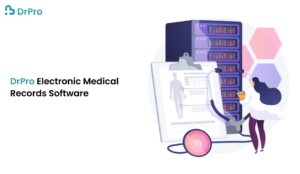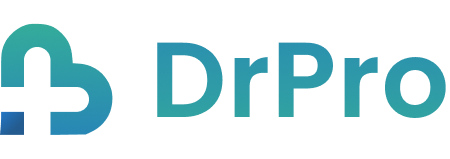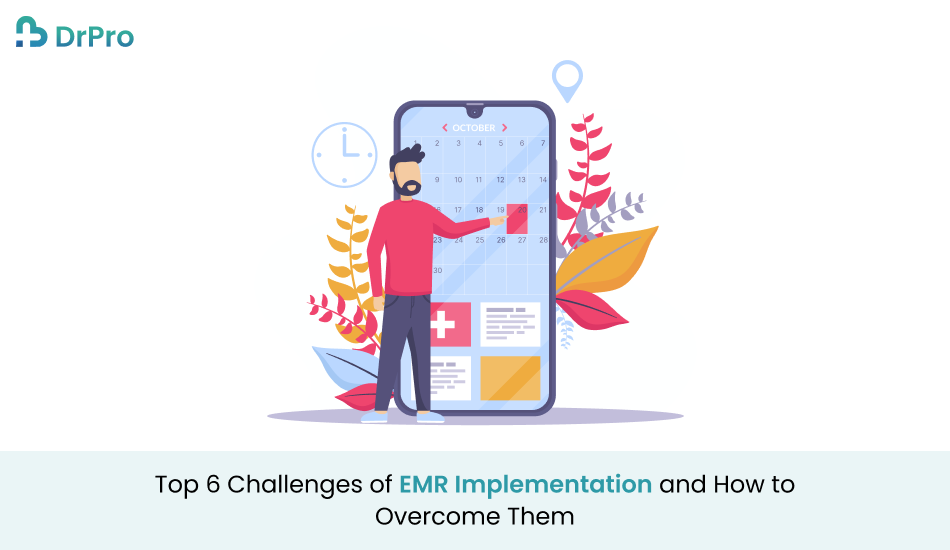Quick Summary
Based on the literature, the successful deployment of Electronic Medical Records software (EMR) systems provides several issues in healthcare organizations. But, knowledge of these challenges together with ways of handling them is crucial if one is to undertake a successful transition. Having provided an understanding of the general challenges surrounding EMR implementation, this article underscores six key features and provides useful advice on how to overcome these challenges.
Introduction
Moving from the old paper-based of recording patients’ details to the Electronic Medical Records software is a revolution in the delivery of health services. In an age of skyrocketing concern for information accuracy, availability, and patient safety in an organization, Emr Systems cannot be overlooked by the healthcare providers that are thrust to upgrade their operational efficiency and patient care. As healthcare providers adopt more electronic records, it isn’t only improving the healthcare teams’ flow of information, but also organizational functions decreasing the rate of mistakes and making the data immediately accessible.
Nonetheless, the pursuit of successful Electronic Medical Records software implementation is honored with a string of challenges. The management of most healthcare facilities faces challenges that threaten to hinder efficient implementation of these systems thus causing frustration to the working staff and hindered provision of services to more patients. Change management, conversion of data, high cost, disruption of workflow, compatibility problems, and legal and security concerns are some of the biggest barriers experienced during this process.
Since these are realities that affect system efficiency, their understanding is ‘paramount for healthcare organizations aspiring to optimally leverage on their EMR investments’. Implementing such barriers in advance allows avoiding numerous problems along with gaining more advantages out of Electronic Medical Records software for the organization. In this article, we will focus on the six main challenges of EMR implementation and offer practical recommendations for realizing its potential in healthcare.
Why is Electronic Medical Records Software Important?
Electronic Medical Records software is an essential part of current healthcare systems. Health IT solutions enhance the coordination of care by different caregivers, lower the chance of medical mistakes, and enhance patient experience. EHRs enable easy sharing of information, data is same time accessible, something that is important in decision-making on the patient’s case. However, with the help of Electronic Medical Records software systems, it is possible to increase billings, engage the patients, and meet the regulation requirements. Adoption of the EMR software is not just the new wave of the future but a process that is inevitable to enable competing organizations in healthcare to survive the future technologically enabled market.
Top 6 EMR Implementation Challenges and Their Solutions

1. Resistance to Change
A major factor that organizations face while implementing Electronic Medical Records software is resistance to change from the personnel of the firm. The workers in the healthcare sector especially doctors may have developed a sort of culture to the use of paperwork and may not understand the horrors of coming to the digital record systems.
Solution: To counter this resistance, the following should be implemented in healthcare organizations; compétences dépenses en formation et éducation. It is also effective to provide detailed workouts that focus on how EMR software will provide more advantages versus disadvantages. Further, involving staff during the implementation process and getting their input with conclusions can also create understanding and ownership besides easing the change process.
2. Data Migration Issues
Converting current patient information from paper documents or previous inefficient systems to the new Electronic Medical Records software is very challenging. Lack of quality data can cause problems such as problems in treating patients and managing payment.
Solution: Well well-developed and documented data migration plan is needed. This plan should specify how records are to be evaluated for sufficiency, and how the accuracy of the data recorded should be determined. Working with IT specialists who have worked on data migration before can really be of great help. Audits when needed will also be helpful in maintaining the data integrity after the migration.
3. Cost of Implementation
Adoption of an Electronic Medical Records software is known to be a costly process. These are the types of costs such as the software acquisition costs, hardware costs, implementation and maintenance of the training, and maintenance costs. Some of the following costs might be especially problematic for the smaller practices.
Solution: Healthcare organizations should therefore perform cost cost-benefit analysis in an attempt to establish ROI from EMR software to cut on monetary worries. Furthermore, via financial structures, seeking for grants and researching on how various vendors offer free merchandise which can be utilized to save many funds. It means that many companies opt for implementing change on an incremental basis so that the costs associated with the same do not hit them in one go.
4. Workflow Disruptions
The adoption of Electronic Medical Records software can interfere with the conventional practices in a healthcare facility. Employees may take time to embrace certain changes which results in a tack in the rate of working and an increase in stress levels.
Solution: Close evaluation of past business processes before using Electronic Medical Records software is therefore very essential. Employee engagement should be involved in solving this analysis within organizations to determine discomforting and problematic issues that require amelioration. Another concept is the adaptation of those patterns of operation in a way that will make the efficiency of the new system demonstrable. The use of pilot programs which can give an easier transition in the implementation can be useful since they contain valuable information for changes later on.
5. Interoperability Challenges
Interoperability is therefore the capability of two or even more Electronic Medical Records software to exchange data rationally and efficiently. Interoperability issue leads to incomplete recording of the patient’s information, which is not good for the patient and the patient’s caregivers since it will be characterized by a lot of gaps.
Solution: It is crucial to select the Electronic Medical Records software aligned with standard interoperability. Organizations should work with vendors carefully selecting for integration capabilities of vendors. The provision of data and information disclosure with other healthcare providers and organizations may lead to better conditions for patients as a result of the promotion of strategic stimuli partnerships. IT interoperability capabilities will be continually monitored and assessed to ensure that as technology advances, the system’s capabilities will also advance to suit the change.
6. Compliance and Security Concerns
Many healthcare organizations realize substantial compliance and security risks resulting from the use of electronic medical records software. This means it is critical to guard patients’ data against breaches and determine their conformity to the rules and regulations of healthcare information technology such as HIPAA.
Solution: As far as the security of healthcare information is concerned, it can therefore be said that it operates in an insecure environment and healthcare organizations therefore have to incorporate other measures in ensuring the security of information within their facilities including encryption of information, controlling the access of information as well as conducting periodic security check. Training is one of the common measures, which should be used to minimize data risks as it refers to staff training in data privacy and security. The patient’s trust in the Electronic Medical Records software will be preserved by familiarising with regulatory change and guaranteeing the EMR system’s compliance.
DrPro Electronic Medical Records Software

Transform your healthcare practice with DrPro Electronic Medical Records (EMR) software. Our comprehensive solution streamlines patient data management, ensuring that all critical information is easily accessible in real-time. With features like customizable templates, secure data storage, and efficient billing integration, DrPro EMR enhances the efficiency of your workflows while maintaining patient confidentiality.
Key benefits of our EMR software include:
Improved Patient Care: Quickly access patient histories and treatment plans to make informed decisions.
Enhanced Efficiency: Automate routine tasks, reducing administrative burdens on healthcare staff.
Secure Data Management: Protect sensitive patient information with robust security measures and compliance with healthcare regulations.
Experience the future of patient management with DrPro Electronic Medical Records software, designed to empower healthcare teams and elevate patient experience.
Conclusion
Electronic Medical Records software is a crucial change in healthcare organizations in terms of raising service quality, optimizing and adapting the administration of healthcare, and maintaining the legal standards of an organization. However, Electronic Medical Records software implementation is normally not a smooth sailing affair due to key challenges that are likely to occur along the process of implementing this innovation and these challenges are known to disrupt existing workflows. Healthcare organizations may prepare well for change adoption by identifying the key challenges including change resistance, data transition, cost of implementation, workflow disruptions, interface interfaces, and compliance and security challenges.
In conclusion, therefore, despite the many problems that are likely to be experienced when implementing Electronic Medical Records software, it is very clear that they are not insurmountable problems. Healthcare organizations can therefore overcome each one of these hurdles through due preparation and more importantly through the involvement of key stakeholders so that efficient delivery of health outcomes and operational efficiency is achieved. The future of healthcare requires the acceptance and proper use of beneficial changes and most importantly the use of advanced technology by converting it to electronic medical records thus becoming a crucial goal for organizations who seek to satisfy the demands of the current healthcare system.
Together, ProjectTree and DrPro offer a powerful integration that enhances productivity and effectiveness across project management and healthcare sectors
FAQs
1. What are Electronic Medical Records software?
Electronic Medical Records software are digital systems that allow healthcare providers to document, manage, and store patient health information.
2. Why is Electronic Medical Records software implementation challenging?
Electronic Medical Records software Challenges include resistance to change, data migration issues, costs, workflow disruptions, interoperability, and compliance/security concerns.
3. How can staff resistance to EMR implementation be reduced?
Providing training and involving staff in the implementation process can help reduce resistance and foster acceptance.
4. What is interoperability in EMR systems?
Interoperability refers to the ability of different EMR systems to communicate and share patient information effectively.
5. Why is data security important in EMR implementation?
Data security is crucial to protect patient information from breaches and ensure compliance with healthcare regulations like HIPAA.


